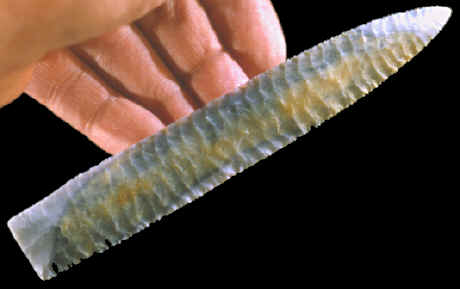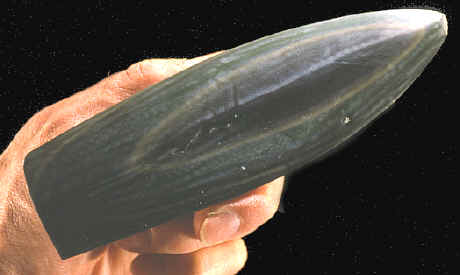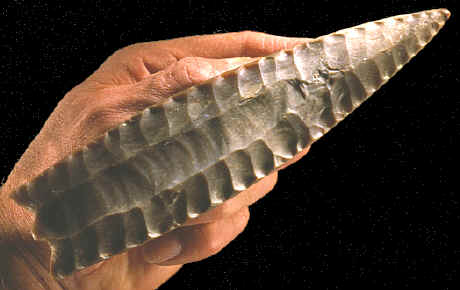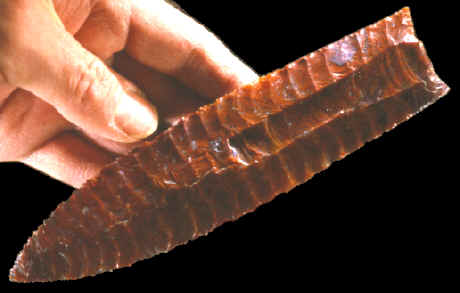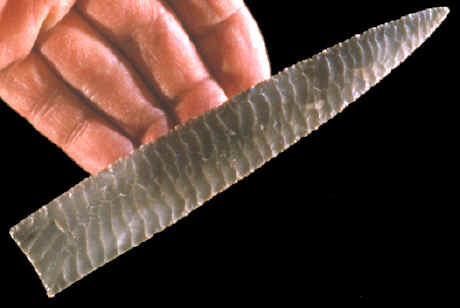|
|
|
By the late 1960's Richard Warren began making his flake-over- grinding points in fairly large numbers. He also fluted some of these beautiful parallel flaked art pieces. Another style of point he began making at this time were delicately flaked long fluted Cumberland points. |
|
|
|
|
Richard Warren originally used a sixteen-penny nail for a pressure flaker. Larry Nelson reports that's how he showed him to do it in the late 1950's. Mr. Warren was able to use a billet or baton for percussion flaking but he claimed it was to slow and caused to much breakage. So in place of the traditional tools, he built a lever machine that was able to accomplish both pressure flaking and fluting. |
|
|
|
|
Larry Nelson also reports that when Richard Warren was "doing his fine, hand-held pressure flaking or notching and retouching edges on the big "gray ghost" spears, he preferred to stand upright at his workbench". The point he was working on was held on a pad of conveyer belt material. He also used both florescent and incandescent light to work under. |
|
|
|
|
A long time collector and flintknapper from Kansas City, Charley Shewey, probably had the largest collection of Richard Warren's flake-over-grinding points. Charley purchased them over a period of several years and tried to buy his very best examples. It's believed that Charley had not only the largest collection of Warren's points but also the best quality examples that he ever made. |
|
|
|
|
Richard Warren is recognized as the first U.S. knapper who produced flake-over-grinding points in large numbers. Charley Shewey's collection alone contained approximately 700 examples of his work. |
|
| CONTINUE ON TO PAGE FOUR | |
|
"REFERENCES" 2002, Nelson, Larry, "The Richard Warren I Knew", Chips, Vol. 14, #4, pp. 16-18. |
|
